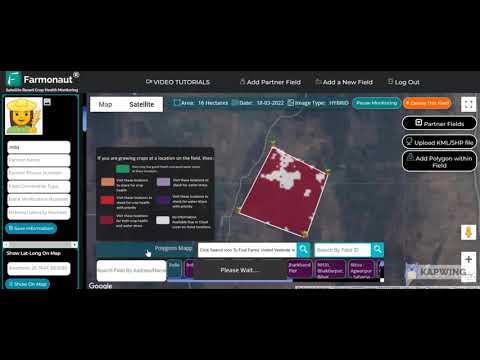Australian Agribusiness Resilience: Digital Innovation and Adaptation in the Face of COVID-19
“Australian agribusinesses implemented over 50% more digital innovations in 2020 compared to 2019 due to COVID-19 challenges.”
In the face of unprecedented challenges brought about by the COVID-19 pandemic, Australian agribusiness has demonstrated remarkable resilience and adaptability. As we navigate through these turbulent times, we’ve witnessed a surge in digital innovation and technological advancements that are reshaping our agricultural landscape. This comprehensive exploration delves into how the industry is not just surviving but thriving through innovative approaches and digital resources.
The Impact of COVID-19 on Australian Agriculture
The global pandemic has undeniably disrupted traditional farming practices and supply chains. However, it has also accelerated the adoption of digital technologies and innovative solutions across the agricultural sector. Let’s examine how Australian farmers and agribusinesses are leveraging these advancements to overcome obstacles and enhance productivity.
- Rapid adoption of digital tools for remote farm management
- Increased focus on local supply chains and food security
- Shift towards precision agriculture techniques
- Enhanced use of data analytics for decision-making
As we delve deeper into these developments, it’s crucial to recognize the role of companies like Farmonaut in providing cutting-edge solutions. Farmonaut’s satellite-based farm management platform has become an invaluable resource for farmers seeking to optimize their operations in these challenging times.

Digital Resources Empowering Australian Farmers
The agricultural sector has seen a significant uptick in the adoption of digital resources, providing farmers with powerful tools to enhance their operations. These innovations are not just improving efficiency; they’re transforming the very nature of farming in Australia.
- Satellite imagery for crop monitoring and analysis
- AI-powered advisory systems for personalized farming strategies
- Blockchain technology for supply chain transparency
- IoT devices for real-time data collection and analysis
Farmonaut’s platform exemplifies the power of these digital resources. By integrating satellite imagery with AI-driven insights, farmers can make data-informed decisions about crop health, irrigation, and resource allocation. This level of precision was once unimaginable but is now at the fingertips of Australian farmers.
Farming Technology Advancements: A New Era in Agriculture
The rapid pace of technological advancement in agriculture is ushering in a new era of farming. From autonomous machinery to gene editing, these innovations are revolutionizing how we approach food production and land management.
- Drone technology for aerial surveying and precision spraying
- Robotics for automated harvesting and sorting
- Advanced sensors for soil and crop health monitoring
- Machine learning algorithms for predictive analytics
These advancements are not just futuristic concepts; they’re being implemented across Australian farms today. For instance, Farmonaut’s integration of satellite technology with AI is enabling farmers to monitor vast areas of land with unprecedented accuracy and efficiency.
Livestock Management Strategies in the Digital Age
The livestock sector has not been left behind in this digital revolution. Innovative strategies are being employed to improve animal welfare, increase productivity, and ensure sustainable practices.
- GPS tracking for herd management and grazing optimization
- Wearable devices for monitoring animal health and behavior
- Automated feeding systems for precise nutrition management
- Genetic analysis for breeding program optimization
These technologies are transforming livestock management, allowing farmers to make data-driven decisions that improve both animal welfare and farm profitability. While Farmonaut primarily focuses on crop monitoring, its satellite imagery can also be valuable for pasture management in livestock farming.
Explore Farmonaut’s API for advanced agricultural data integration
Improving Crop Yield Potential Through Innovation
“Efficient nitrogen use in Australian agriculture increased crop yields by up to 30% while reducing fertilizer costs by 25%.”
One of the most significant areas of focus in Australian agribusiness has been improving crop yield potential. Through a combination of genetic research, precision farming techniques, and data-driven decision-making, farmers are achieving unprecedented levels of productivity.
- Advanced seed varieties resistant to drought and pests
- Precision agriculture for optimized resource use
- AI-powered crop modeling for yield prediction
- Biostimulants for enhanced plant growth and stress resistance
Farmonaut’s satellite-based crop health monitoring plays a crucial role in this area, providing farmers with real-time insights into vegetation health, soil moisture levels, and other critical metrics that directly impact yield potential.

Efficient Nitrogen Use in Agriculture: A Game-Changer
Nitrogen management has long been a critical aspect of agriculture, and recent innovations in this area are yielding impressive results. Efficient nitrogen use not only boosts crop yields but also reduces environmental impact and production costs.
- Precision application technologies for targeted fertilizer use
- Slow-release fertilizers for prolonged nutrient availability
- Nitrogen-fixing cover crops for natural soil enrichment
- Sensor-based systems for real-time nitrogen monitoring
These advancements align perfectly with Farmonaut’s mission of promoting sustainable agriculture. By providing accurate data on crop health and soil conditions, Farmonaut enables farmers to optimize their nitrogen application, reducing waste and maximizing efficiency.
Access Farmonaut’s API Developer Docs for seamless integration
Farmland Value Trends: The Impact of Technology
The integration of technology in agriculture is not just changing farming practices; it’s also influencing farmland values. As farms become more productive and efficient through digital innovation, their inherent value is increasing.
- Higher valuations for tech-enabled farms
- Increased demand for properties with established digital infrastructure
- Growing interest from investors in agritech-focused properties
- Shift in valuation metrics to include technological capabilities
This trend underscores the importance of adopting technologies like Farmonaut’s platform, which not only improves farm productivity but can also enhance the overall value of agricultural properties.
Agricultural Industry Adaptation: Embracing Change
The Australian agricultural industry has shown remarkable adaptability in the face of COVID-19 challenges. This resilience is driven by a willingness to embrace new technologies and innovative approaches to farming.
- Rapid adoption of digital platforms for remote farm management
- Shift towards local supply chains and direct-to-consumer models
- Increased focus on sustainable and regenerative farming practices
- Investment in workforce training for new technologies
Farmonaut’s user-friendly platform has been instrumental in this adaptation process, allowing farmers of all technical backgrounds to leverage advanced satellite technology and AI-driven insights.
Seeding Equipment Best Practices: Precision and Efficiency
Advancements in seeding equipment have revolutionized planting processes, improving accuracy, efficiency, and ultimately, crop yields. Australian farmers are adopting these technologies to optimize their operations.
- Variable-rate seeding for optimized plant populations
- GPS-guided planters for precise row spacing and depth control
- Seed monitoring systems for real-time planting data
- Multi-hybrid planters for tailored seed placement
While Farmonaut doesn’t directly provide seeding equipment, its satellite imagery and AI analysis can inform decisions on optimal planting strategies, complementing these advanced seeding technologies.
Government Support and Policy Initiatives
The Australian government has played a crucial role in supporting the agricultural sector’s digital transformation, particularly in response to COVID-19 challenges.
- Grants for digital adoption in agriculture
- Research funding for agritech innovations
- Tax incentives for farm modernization
- Support for rural broadband infrastructure
These initiatives create an enabling environment for the adoption of technologies like Farmonaut, making advanced farm management tools more accessible to Australian farmers.
Weather Impacts and Climate Resilience
In the face of changing climate patterns, Australian farmers are leveraging technology to build resilience and adapt to weather impacts.
- Advanced weather forecasting models for improved planning
- Drought-resistant crop varieties developed through genetic research
- Water-conserving irrigation systems guided by satellite data
- Climate-smart agriculture practices informed by AI analysis
Farmonaut’s platform contributes significantly to this area by providing real-time weather data and satellite imagery, enabling farmers to make informed decisions in response to changing weather conditions.
Harvest Preparation and Storage Solutions
The final stages of crop production – harvest and storage – have also been transformed by digital innovation. Australian farmers are adopting smart solutions to optimize these crucial processes.
- Predictive analytics for optimal harvest timing
- Automated harvesting equipment for increased efficiency
- Smart storage systems with temperature and humidity control
- Blockchain-based traceability for improved supply chain management
Farmonaut’s satellite monitoring can provide valuable insights for harvest timing and yield estimation, complementing these advanced harvest and storage technologies.
Australian Agribusiness Digital Innovation Tracker
| Innovation Type | Adoption Rate (%) | Estimated Productivity Increase (%) | COVID-19 Impact |
|---|---|---|---|
| Precision Farming | 65 | 25 | High |
| Biostimulants | 40 | 15 | Medium |
| Livestock Management Tech | 55 | 20 | Medium |
| Efficient Nitrogen Use | 70 | 30 | High |
| Advanced Seeding Equipment | 60 | 22 | Medium |
| Pasture Management Technologies | 50 | 18 | Low |
| Overall Digital Innovation | 58 | 23 | High |
Conclusion: The Future of Australian Agribusiness
As we look to the future, it’s clear that digital innovation and technological adaptation will continue to drive the resilience and growth of Australian agribusiness. The sector’s response to COVID-19 challenges has accelerated this digital transformation, setting the stage for a more efficient, sustainable, and productive agricultural industry.
From satellite-based crop monitoring to AI-driven farm management, from precision agriculture to blockchain traceability, the tools and technologies available to Australian farmers are more powerful than ever. Companies like Farmonaut are at the forefront of this revolution, providing accessible and affordable solutions that empower farmers to make data-driven decisions and optimize their operations.
As we continue to navigate the challenges posed by climate change, market fluctuations, and global events, the innovative spirit and adaptability of Australian agribusiness will undoubtedly lead to new breakthroughs and solutions. The future of farming in Australia is digital, data-driven, and more resilient than ever before.
FAQ Section
Q: How has COVID-19 impacted Australian agribusiness?
A: COVID-19 has accelerated digital adoption in Australian agribusiness, leading to increased use of remote management tools, precision farming techniques, and data analytics for decision-making.
Q: What role does satellite technology play in modern farming?
A: Satellite technology, like that provided by Farmonaut, enables real-time crop health monitoring, soil moisture analysis, and weather forecasting, helping farmers make informed decisions about resource management and crop care.
Q: How are livestock management strategies evolving with technology?
A: Modern livestock management incorporates GPS tracking for herd management, wearable devices for animal health monitoring, automated feeding systems, and genetic analysis for breeding optimization.
Q: What are some key innovations improving crop yield potential?
A: Key innovations include advanced seed varieties, precision agriculture techniques, AI-powered crop modeling, and the use of biostimulants for enhanced plant growth and stress resistance.
Q: How is efficient nitrogen use benefiting Australian agriculture?
A: Efficient nitrogen use, through precision application technologies and sensor-based monitoring, has increased crop yields by up to 30% while reducing fertilizer costs by 25%.






